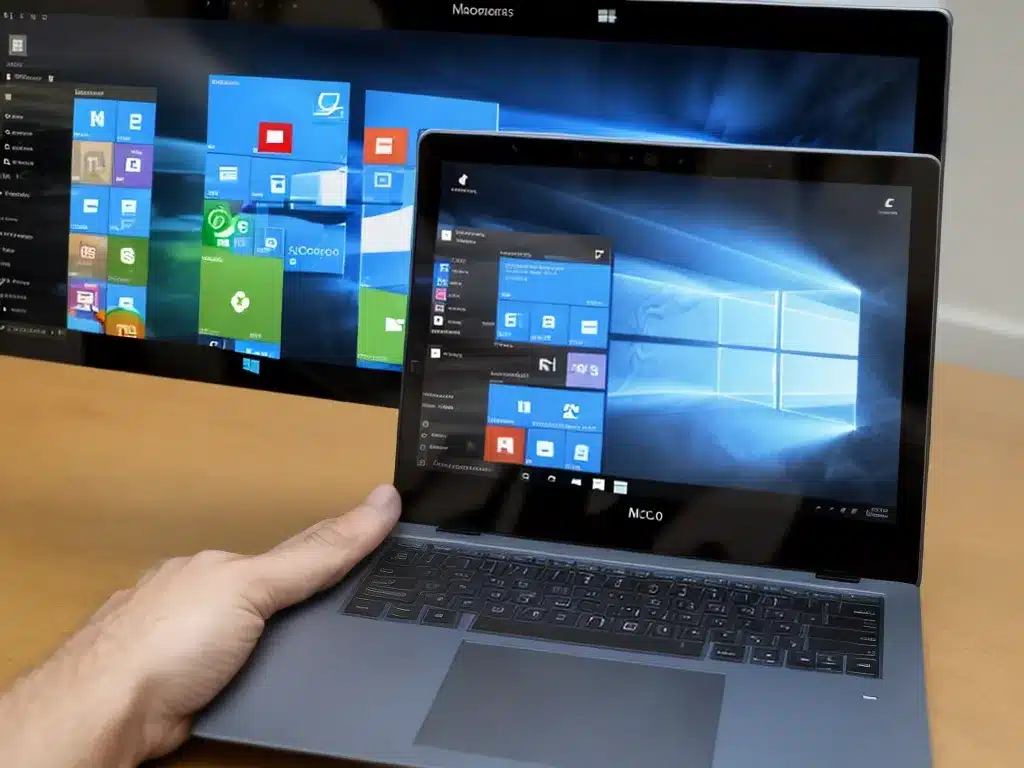Introduction
Having high memory usage in Windows 10 can cause your computer to run slowly and unreliably. However, there are several ways to diagnose and fix high memory usage issues to improve performance. In this article, I will provide an in-depth guide on how to fix high memory usage problems in Windows 10.
Check Task Manager For Memory Usage
The first step is to open up Task Manager in Windows 10 to view what processes and applications are using up memory. Here is how to check memory usage in Task Manager:
- Press Ctrl + Shift + Esc on your keyboard to open Task Manager.
- Click on the Memory tab at the top.
- Sort the processes by Memory usage by clicking on the Memory column header.
- Look at the processes using the most memory at the top of the list. Make a note of any unexpected or unusual processes using high amounts of memory.
This will give you an idea of what applications or system processes are hogging memory on your PC.
Close Unnecessary Background Apps
Often the culprit for high memory usage is too many unnecessary apps running in the background. Here are some tips for closing background apps:
- Right-click on the Taskbar and select Task Manager.
- Go to the Processes tab.
- Look for apps or processes you don’t need running in the background.
- Select the apps you want to close and click End task.
Closing unnecessary background apps can free up a significant amount of memory.
Adjust Visual Effects For Performance
You can reduce memory usage in Windows 10 by adjusting visual effects for performance:
- Open the Start menu and search for Adjust appearance and performance of Windows.
- Click on Adjust for best performance under Visual Effects.
- Restart your PC for changes to take effect.
Disabling fancy visual effects like animations, transparency, shadows etc can reduce memory usage and improve PC performance.
Install More RAM
Increasing your total system RAM is an effective way to deal with high memory usage issues, especially if you regularly have multiple demanding applications open.
- Check how many RAM slots your motherboard has and the maximum supported memory.
- Buy and install RAM modules to reach the max memory capacity.
- For most PCs today, 16GB of RAM is recommended for best performance in Windows 10.
Upgrading RAM will give your system more headroom to handle high memory usage.
Adjust Page File Size
You can also adjust the size of the Windows Page File to allow more disk space to be used as virtual memory:
- Open System in the Control Panel.
- Click on Advanced system settings.
- Under Performance, click Settings.
- Click the Advanced tab.
- Under Virtual memory, click Change.
- Uncheck automatically manage and set a Custom size.
- Set the size to at least 1.5x your total RAM.
- Click Set and OK to save changes.
This allows Windows to offload less used memory pages to disk and free up RAM for applications.
Use Memory Diagnostic Tool
To check for memory problems, you can run the Windows Memory Diagnostic tool:
- Open the Start menu and search for Windows Memory Diagnostic.
- Restart your PC with the tool to let it run during boot.
- It will check for memory errors and bad sectors on your RAM modules.
- If errors are found, you may need to replace the faulty RAM sticks.
This can help diagnose if faulty RAM is causing high memory usage issues.
Reset Virtual Memory
Resetting the virtual memory settings can fix memory leaks and high memory usage issues:
- Open the Control Panel and search for System.
- Click Advanced System Settings > Advanced tab.
- Under Performance, click Settings.
- Click the Advanced tab and then Change under Virtual Memory.
- Uncheck Automatically manage and click No paging file.
- Restart your PC and repeat steps, but choose System managed size.
This will reset the virtual memory and clear any corrupted paging files.
Conclusion
Following the steps outlined in this guide can help troubleshoot, diagnose and fix high memory usage problems in Windows 10. Start by checking Task Manager for rogue processes hogging memory. Adjust visual effects, close background apps, add more RAM and tweak the page file size. Use memory diagnostic tools to check for hardware issues. Finally resetting the virtual memory can clear out any corrupted files. With patience and systematically working through these steps, you should be able to significantly reduce high memory usage and boost PC performance in Windows 10.













